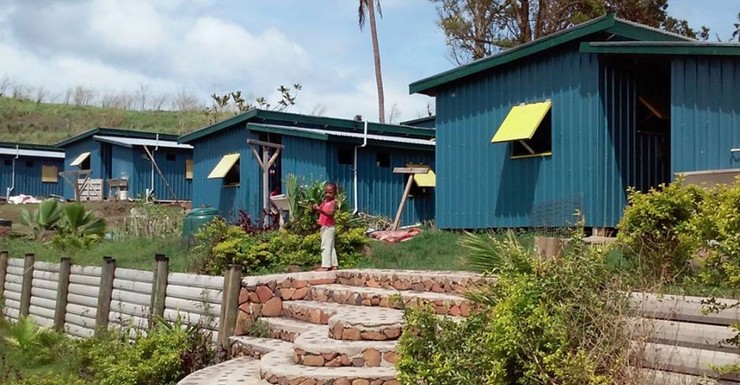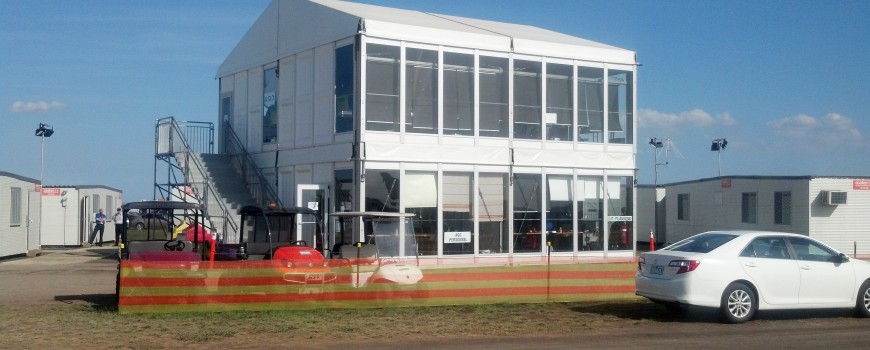Modular home building, ESD and costs
Modular building should be the natural choice for Australian homes, both new build and renovations. Off-site or factory-built components (whether ‘volumetric’ modules or flat-pack panels) should be cheaper, quicker, higher quality, and provide more design flexibility.
On-site labour can easily cost 4 times factory labour rates, despite being able to get less done because on-site work is limited to relatively small tools. Building sites in Australia are geographically dispersed, adding to travel costs for workers and their tools. Off-cuts are much harder to use on-site than in a factory, adding to materials costs (and waste disposal costs).
You wouldn’t buy a car from a company that said it was going to build it in your backyard, (and you certainly wouldn’t be able to buy it for under $20/kg. So why buy a house that way?
You might think this shelter for security staff is a modular building, but it was built on site.
At least when it had to be relocated for a railway station works, it was moved as a module.
However, modular construction has achieved only a tiny slice of the home construction market, despite some of the earliest buildings post-1788 being made from kits imported from the UK (almost by necessity). . Why has the car industry progressed so far in 130 years, yet many home building practices date from over 2,000 years ago?
What’s the problem?
In my opinion, the main factors seem to be:
- factory construction will be at an economic disadvantage compared with the low-capital on-site construction, until production volumes savings off-set that capital investment. This is largely a chicken-and-egg problem.
- a lack of interoperability standards between modular building companies, means each must produce all it’s components, and so bear the capital investment of all tooling etc. This compounds the chicken-and-egg problem above.
- a customer perception that modular means design inflexibility, and all houses looking the same (but modern design and manufacturing methods should increase customer choice).
- a lack of systems, standards and software integrating home buyer requirements with building design and manufacturing.

These modular structures designed by Australian Peter Drysdale, were the only buildings in the area to survived Cyclone Winston (2016). They can be constructed in 5 days, for $13,000. Photo credit: ABC
Geoff Andrews is Engineering Manager, and MD at Genesis Now, and former Engineering Director (and co-founder) of ESD Consultancy Ark Resources.


